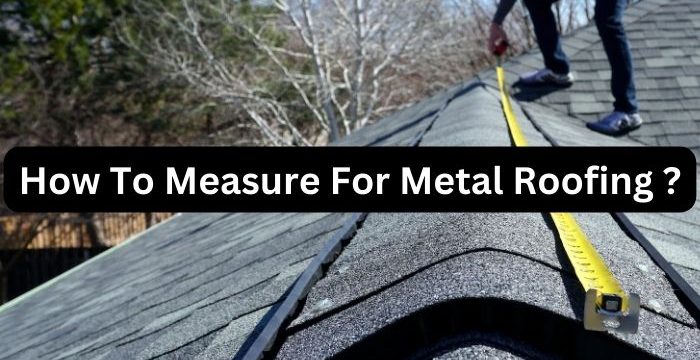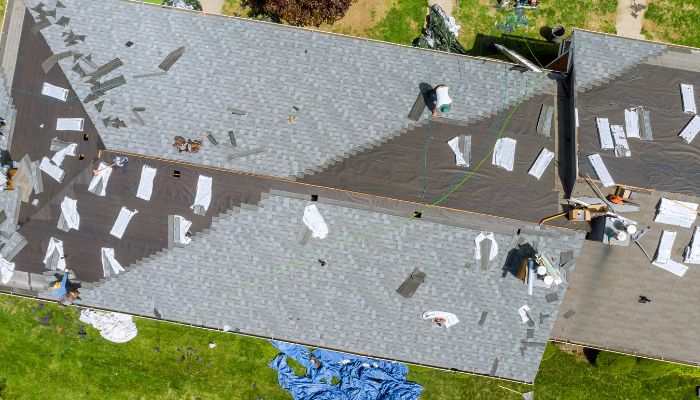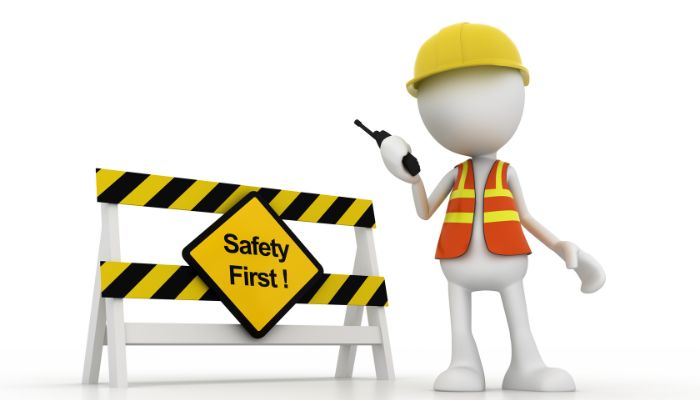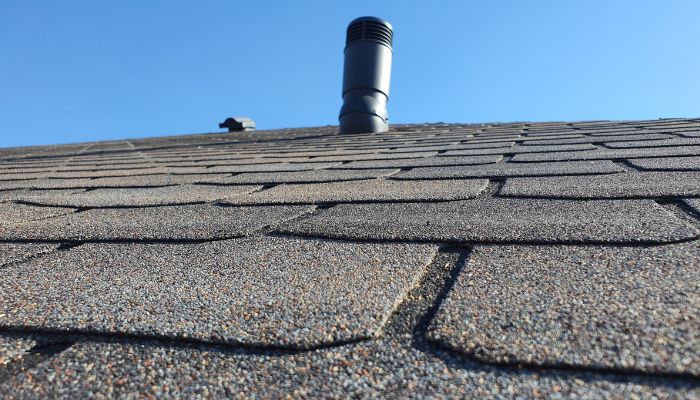How To Measure For Metal Roofing ? - Roof Repair Services
- Home
- How To Measure For Metal Roofing ?
Car Repairing

- January 5, 2024
- By: roofrepair_admin
- General
- Comments: 0
How To Measure For Metal Roofing ?
When planning a metal roofing project, taking accurate measurements is a crucial first step. Whether you’re installing a new roof or replacing an old one, ensures that you purchase the correct amount of roofing material and avoid costly mistakes. Inaccurate measurements can lead to a shortfall in materials, delays in your project, and additional expenses. This step-by-step guide will walk you through the process, helping you achieve precise measurements that set the stage for a successful metal roofing installation.
Tools and Materials You’ll Need
Before you begin measuring for your metal roof, gather the necessary tools and materials. Having the right equipment on hand will make the process smoother and more accurate. Here’s what you’ll need:
- Tape Measure: A reliable tape measure is essential for taking accurate measurements of the roof’s length, width, and other dimensions.
- Ladder: Ensure you have a sturdy ladder that allows you to safely access your roof.
- Notepad and Pen: Keep track of your measurements as you go along.
- Calculator: Handy for calculating the total square footage and determining the amount of metal roofing materials needed.
- Level: A level will help you measure the roof pitch accurately.
- Safety Gear: Don’t forget safety equipment like gloves, a hard hat, and non-slip shoes.
- Helper: It’s always beneficial to have someone assist you, especially when dealing with long tape measures or handling ladders.
With these tools in hand, you’re ready to begin the measurement process.
Step 1: Measuring the Roof’s Length
The first step in measuring for metal roofing is to determine the length of your roof. This measurement will give you a clear idea of how much material you’ll need for the lengthwise direction of your metal roof panels. Here’s how to proceed:
- Position the Ladder: Place your ladder securely against the side of the building and ensure it’s stable before climbing up.
- Measure One Edge: Start at one edge of the roof and extend your tape measure to the other side. Measure the length of the roof from the ridge (the topmost point) down to the fascia board (the board at the edge of the roof).
- Take Note of Obstacles: If there are chimneys, vents, or other structures on your roof, make sure to account for these in your measurements. You may need to adjust the length accordingly or plan to trim the panels around these obstacles during installation.
- Repeat Steps for All Roof Sections: If your roof has multiple sections or planes, repeat the measurement process for each one. Record each length measurement in your notepad.
- Double-Check Your Measurements: Accuracy is key in this process, so it’s wise to measure each section twice to ensure your figures are correct.
By accurately measuring the roof’s length, you can calculate how much material is needed for this dimension, setting the foundation for your metal roofing installation.

Step 2: Measuring the Roof’s Width
Next, you’ll need to measure the width of your roof. This measurement is equally important as it determines the widthwise coverage of your metal roofing panels. Follow these steps to get an accurate width measurement:
- Measure the Width at the Bottom Edge: Starting at the fascia board on one side of the roof, extend your tape measure to the fascia board on the other side. This gives you the width at the base of the roof.
- Measure the Width at the Top Edge: Repeat the measurement process at the ridge of the roof. The width at the top should ideally match the width at the bottom. If there’s a discrepancy, check for potential errors or structural issues.
- Measure Around Overhangs: If your roof has overhangs, make sure to include these in your measurements. Overhangs are the portions of the roof that extend beyond the exterior walls of the building. Measure from the exterior wall to the edge of the overhang and add this to your total width measurement.
- Account for Any Irregularities: Some roofs may have irregular shapes or features that complicate the measurement process. Be sure to measure around these and note them separately.
- Repeat for Multiple Roof Planes: If your roof has more than one plane (e.g., an L-shaped roof), measure the width of each plane individually.
Accurately measuring the roof’s width is essential for determining the correct number of panels needed to cover the entire roof.
Understanding the Roof Pitch and Its Role in Measurements
Now that you’ve measured the roof’s length and width, it’s time to understand the roof pitch. The pitch of a roof is a measure of its slope, and it plays a critical role in how you calculate the total square footage of the roof. The roof pitch affects the amount of metal roofing material required, as steeper roofs will need more material than flatter ones.
- What Is Roof Pitch?: Roof pitch is the ratio of the roof’s vertical rise to its horizontal span. It is often expressed as a fraction, such as 4/12, meaning the roof rises 4 inches for every 12 inches of horizontal run.
- Why Roof Pitch Matters: A steeper roof pitch increases the total roof area that needs to be covered with metal roofing panels. This means you’ll need to calculate the roof pitch accurately to determine how much material is needed.
- Measuring Roof Pitch: To measure the roof pitch, place a level horizontally against the roof and measure the vertical rise over a 12-inch span. This gives you the pitch, which is essential for calculating the total square footage of the roof.
Understanding the roof pitch and incorporating it into your measurements will help you calculate the accurate amount of metal roofing materials needed for your project.

Step 3: Calculating the Roof’s Pitch
After measuring the roof’s length and width in Part 1, the next crucial step is calculating the roof pitch. The pitch, or slope, of your roof is a vital factor in determining the total square footage and the amount of metal roofing materials needed. Understanding the roof pitch ensures you account for the slope when estimating how much material you’ll need for the entire roofing project.
- What Is Roof Pitch? Roof pitch refers to the vertical rise of the roof in inches for every 12 inches of horizontal run. For example, a roof with a 6/12 pitch rises 6 inches for every 12 inches of horizontal distance.
- How to Measure Roof Pitch: To measure the pitch, place a level horizontally on the roof, ensuring it is flat. Measure the vertical rise from the roof’s surface to the bottom of the level at the 12-inch mark. This measurement gives you the roof pitch. Record this number, as it will be crucial for calculating the total square footage.
Understanding the pitch is essential because steeper roofs require more material than flatter roofs. Accurate measurements of the pitch will help you determine the correct amount of metal roofing material needed, avoiding any shortfalls or excess material during the installation.
Step 4: Measuring the Roof’s Overhang
The overhang of your roof is the portion that extends beyond the exterior walls of the building. When measuring for a metal roof, it’s important to account for these overhangs to ensure you have enough material to cover the entire roof, including the edges.
- Start at the Fascia Board: Position your tape measure at the fascia board, where the roof ends. Measure from this point to the outer edge of the overhang.
- Measure Around the Perimeter: Walk around the perimeter of the roof, measuring the overhang on all sides. Overhangs may vary, so it’s important to measure each section individually.
- Record Each Measurement: Take note of each measurement, as these will be added to your total square footage calculation.
Including the overhangs in your measurements ensures that your metal roofing materials cover every part of the roof, protecting your home from the elements.

Step 5: Calculating the Total Square Footage
Now that you’ve measured the roof’s length, width, pitch, and overhangs, it’s time to calculate the total square footage. This calculation will give you a precise idea of how much metal roofing material you need for the project.
- Calculate the Flat Roof Area: Multiply the length and width of each roof plane to determine the flat area. For example, if your roof’s length is 40 feet and the width is 20 feet, the flat area is 800 square feet.
- Account for Roof Pitch: Use the roof pitch to adjust the flat area for the slope. The steeper the pitch, the larger the surface area. Multiply the flat area by a pitch factor to get the adjusted square footage. For example, a 6/12 pitch has a factor of 1.118, so the adjusted area would be 800 square feet * 1.118 = 894.4 square feet.
- Include Overhangs: Add the square footage of the overhangs to the total. If the overhang area is 100 square feet, your total square footage would be 894.4 + 100 = 994.4 square feet.
The final square footage figure will guide you in determining how much material you’ll need, ensuring your metal roofing installation goes smoothly.
Step 6: Accounting for Waste and Overlaps
When planning a metal roofing installation, it’s essential to account for waste and overlaps. This ensures you purchase enough material to cover the entire roof, including areas where panels overlap.
- Overlaps: Metal roof panels often overlap each other slightly to prevent water from seeping through the seams. This overlap reduces the effective coverage of each panel. Typically, you’ll need to add about 10% to your total square footage to account for overlaps.
- Waste: During installation, there may be waste due to cutting panels to fit around chimneys, vents, or other obstacles. Adding an additional 5-10% to your total material calculation helps cover any waste that occurs.
By considering waste and overlaps, you ensure that you have enough material to complete your roofing project without unexpected shortages.

Tips for Ensuring Accurate Measurements
Accurate measurements are the cornerstone of a successful metal roofing project. Here are some tips to help you avoid potential errors:
- Double-Check All Measurements: Before finalizing your calculations, double-check each measurement to ensure accuracy. Small errors can lead to significant issues during installation.
- Use a Top-Down View: When calculating the total square footage, visualize the roof from a top-down view. This perspective helps you account for all areas of the roof, including overhangs and irregular shapes.
- Consult with Roofing Contractors: If you’re unsure about any measurements or calculations, it’s a good idea to consult with professional roofing contractors. They can provide guidance and ensure your measurements are correct.
- Measure Twice, Cut Once: This old adage is especially true in roofing projects. Taking the time to measure carefully and accurately will save you time and money in the long run.
Following these tips will help you achieve precise measurements, ensuring a smooth and successful metal roofing installation.
Conclusion: Preparing for a Successful Metal Roof Installation
Completing accurate measurements for your metal roof is a critical step in ensuring the success of your roofing project. By measuring the roof’s length, width, pitch, and overhangs, and calculating the total square footage with allowances for waste and overlaps, you’ll have a clear understanding of how much material is needed. Whether you’re tackling the installation yourself or working with professional roofing contractors, these measurements will guide you in ordering the right amount of metal roofing materials, avoiding potential errors, and ensuring a smooth installation process.
In this step-by-step guide, you’ve learned how to measure for metal roofing with precision. With these measurements in hand, you’re ready to move forward with your project, confident in the knowledge that you’ve laid a solid foundation for a durable and attractive metal roof. If you have further questions or need additional guidance, don’t hesitate to consult with a roofing contractor who can provide expert advice and support.
